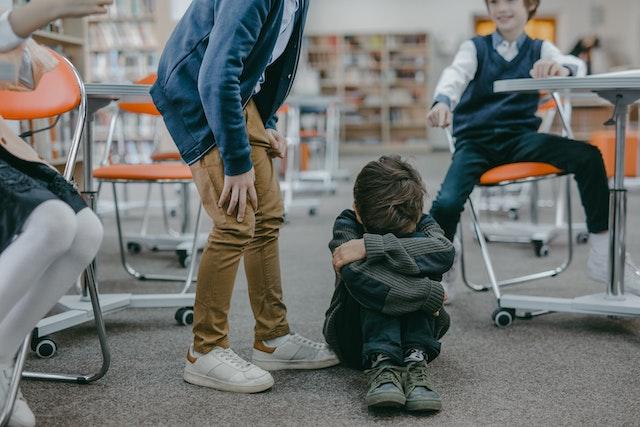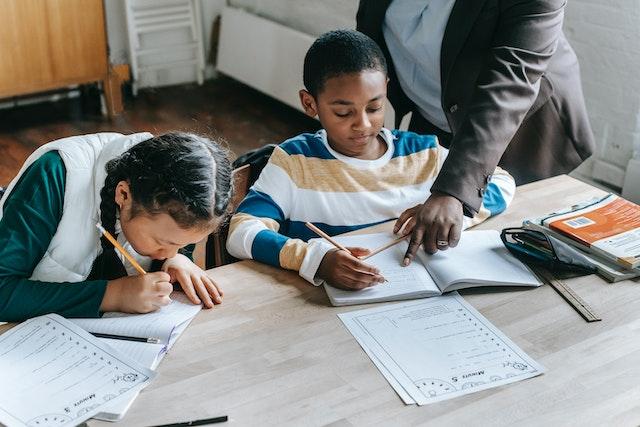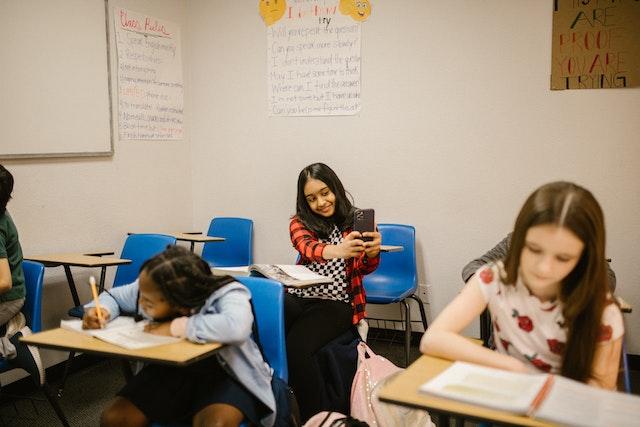Schools can be faced with many safety challenges but there are many measures that can be taken to create a better and safer learning environment.
When it comes to schools, the well-being of students should always come first.
Unfortunately, there are times when negligence at school and overlooked issues cast a shadow on the learning experience.
However, we have the power to create a nurturing environment that promotes growth and happiness among students.
In this article, we’ll explore ten essential measures that schools can adopt to create a safe learning environment where students can thrive academically and emotionally.
1. Building Strong Anti-Bullying Policies
Bullying has no place in our schools. To tackle this issue head-on, we need comprehensive anti-bullying policies that leave no room for harm. These policies should not only address bullying when it happens but also focus on prevention and long-term support for those affected.
By promoting kindness and empathy, we can create a culture where bullying is rejected, and positive relationships flourish.
A key aspect of strong anti-bullying policies is raising awareness. Workshops and programs can educate students about the devastating effects of bullying and the importance of treating others with respect. Equipping teachers and staff to identify and handle bullying incidents promptly is equally crucial. By acting early and supporting victims, schools can foster a safe and accepting atmosphere.
2. Embracing Diversity and Inclusion
Our schools should be vibrant melting pots of diversity, celebrating each student’s uniqueness. Embracing diversity goes beyond mere representation; it’s about creating an equitable and supportive space for all learners, including students with disabilities.
Incorporating diverse perspectives into the curriculum enriches students’ understanding of the world, promoting mutual respect and empathy. Cultural events, heritage months, and diversity workshops further enhance appreciation for the richness of our student body.
We must also ensure that our facilities and resources are accessible to all students, including those with special needs. By creating an inclusive environment, we send a powerful message that every student is valued and belongs.
3. Prioritising Mental Health and Well-Being
A student’s mental health is just as crucial as their physical health. Schools should prioritise mental well-being by offering counselling services and mental health programs. These resources provide a safe space for students to discuss their concerns, develop coping skills, and build resilience.
Mindfulness practices and relaxation techniques contribute to a calmer and more focused learning experience, reducing stress and anxiety. Open conversations about mental health help destigmatise seeking help and foster a supportive environment.
Teachers play a vital role in supporting students’ mental health. By being attentive to their emotional needs and offering encouragement and support, educators contribute to the development of emotionally resilient individuals.
4. Ensuring Physical Safety
Physical safety is the foundation of a safe learning environment. Schools should conduct regular safety audits and strictly adhere to safety protocols to prevent accidents and incidents. By proactively identifying potential hazards, schools can minimise risks and create a secure environment.
Security systems like surveillance cameras and access control mechanisms add an extra layer of protection, deterring unauthorised access and addressing potential threats promptly.
Being prepared to respond to emergencies is equally important. Conducting fire drills and emergency response training equips students and staff with the necessary skills to handle unexpected situations responsibly.
5. Safeguarding the Digital Risks
In the digital age, online safety is as crucial as physical safety. Schools must educate students about cybersecurity risks and responsible internet use, empowering them to navigate the digital world responsibly.
Robust cybersecurity measures, such as firewalls and encryption protocols, protect sensitive information and prevent unauthorised access. Lessons on digital citizenship teach students about respecting others’ privacy and being cautious online.
Collaborating with parents ensures consistent messaging and support for students both at home and in school.
6. Encourage Openness
It is vital that children should feel as though they can talk about issues. Whether it is personal issues, school-related issues, or any other kind of issue, when they feel they can talk, they’ll feel safer.
As a result, the school should ensure that students feel as though they can approach any member of staff. Regardless of how big or small the issue might be, if they can share it then they can find a solution.
7. Promoting Conflict Resolution and Communication Skills
Conflict is a part of life, and schools play a vital role in teaching students constructive conflict resolution skills. Encouraging open communication and active listening creates a supportive environment where students feel heard and understood.
Peer mediation programs, facilitated by trained students, promote empathy and understanding. Teaching assertiveness, negotiation, and problem-solving skills equips students to navigate conflicts respectfully. Promoting healthy communication creates a culture where conflicts become opportunities for growth and understanding.
8. Encouraging Hygiene and Cleanliness
Maintaining a clean and hygienic environment is vital for students’ well-being. Schools can educate students about good hygiene practices, reducing the spread of illnesses and creating a healthier learning space.
Regular handwashing, covering coughs and sneezes, and maintaining personal hygiene help prevent the spread of germs. Proper ventilation and indoor air quality monitoring further contribute to a healthier learning environment.
By fostering a culture of cleanliness and hygiene, schools create a conducive space for learning and promote overall well-being among students and staff.
9. Engaging Parents and the Community
Creating a safe learning environment requires teamwork. Schools can involve parents in their children’s education and collaborate with the community to strengthen safety measures.
Parent-teacher meetings, workshops, and events encourage parents to actively participate in their children’s education journey. Engaging parents in safety initiatives and updating them on school policies and activities ensures that they are well-informed partners in creating a safe learning environment.
Collaborating with the community, such as local organisations, law enforcement agencies, and volunteers, further strengthens school safety measures. By working together, schools and their communities form a supportive network that enhances the well-being of students both within and beyond the school walls.

10. Improving Positive Teacher-Student Relationships
Strong teacher-student relationships are vital for student support and growth. Nurturing trust and understanding creates a safe space for students to learn and thrive.
Teachers who genuinely care about their students’ well-being create an environment where students feel safe to ask questions, seek help, and take risks in their learning. Encouraging open communication and active listening further strengthens these bonds, fostering a sense of belonging and support.
Teachers can provide personalised feedback and recognition, celebrating students’ achievements and efforts. When students know they are valued and understood, they are more likely to engage actively in their education and take ownership of their learning journey.
Creating a safe learning environment is achievable
In summary, schools hold the key to a secure and inclusive learning haven by prioritising anti-bullying policies, diversity, and positive relationships. Nurturing students’ mental health, ensuring physical safety, and safeguarding against cyber threats are crucial for their overall well-being.
Engaging parents and the community creates a robust support network to foster student growth. Together, these vital measures pave the way for academic excellence and emotional resilience, empowering students to navigate life’s trials with poise and empathy. Ultimately, we can create an environment where every student thrives, giving them a brighter and more compassionate future.
Author Profile

- Editor in Chief
- Blogger and Educator by Passion | Senior Online Media & PR Strategist at ClickDo Ltd. | Contributor to many Education, Business & Lifestyle Blogs in the United Kingdom & Germany | Summer Course Student at the London School of Journalism and Course Instructor at the SeekaHost University.
Latest entries
 student lifeJuly 21, 2024Best Family Camps Near London to Enjoy Quality Time During School Holidays
student lifeJuly 21, 2024Best Family Camps Near London to Enjoy Quality Time During School Holidays ed techJuly 7, 2024The 10 Best Online Tutoring Platforms in the UK
ed techJuly 7, 2024The 10 Best Online Tutoring Platforms in the UK student lifeJune 26, 2024The 33 Cheapest Dorm Room Essentials For University or College
student lifeJune 26, 2024The 33 Cheapest Dorm Room Essentials For University or College distance learningMay 28, 2024The Best 16 Online Learning & Teaching Platforms to Close the Attainment Gap
distance learningMay 28, 2024The Best 16 Online Learning & Teaching Platforms to Close the Attainment Gap





